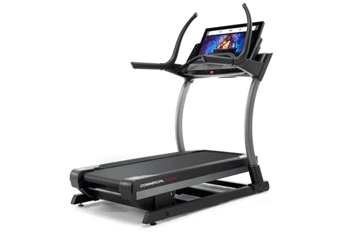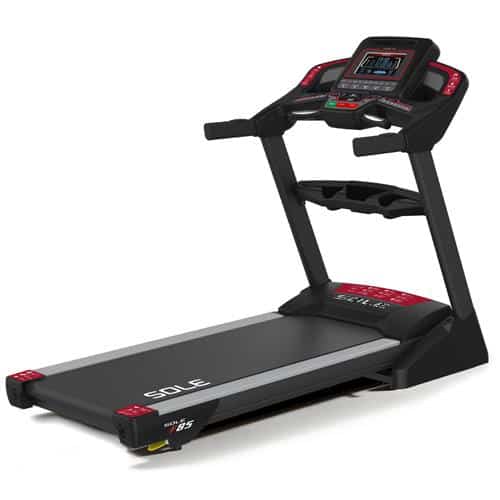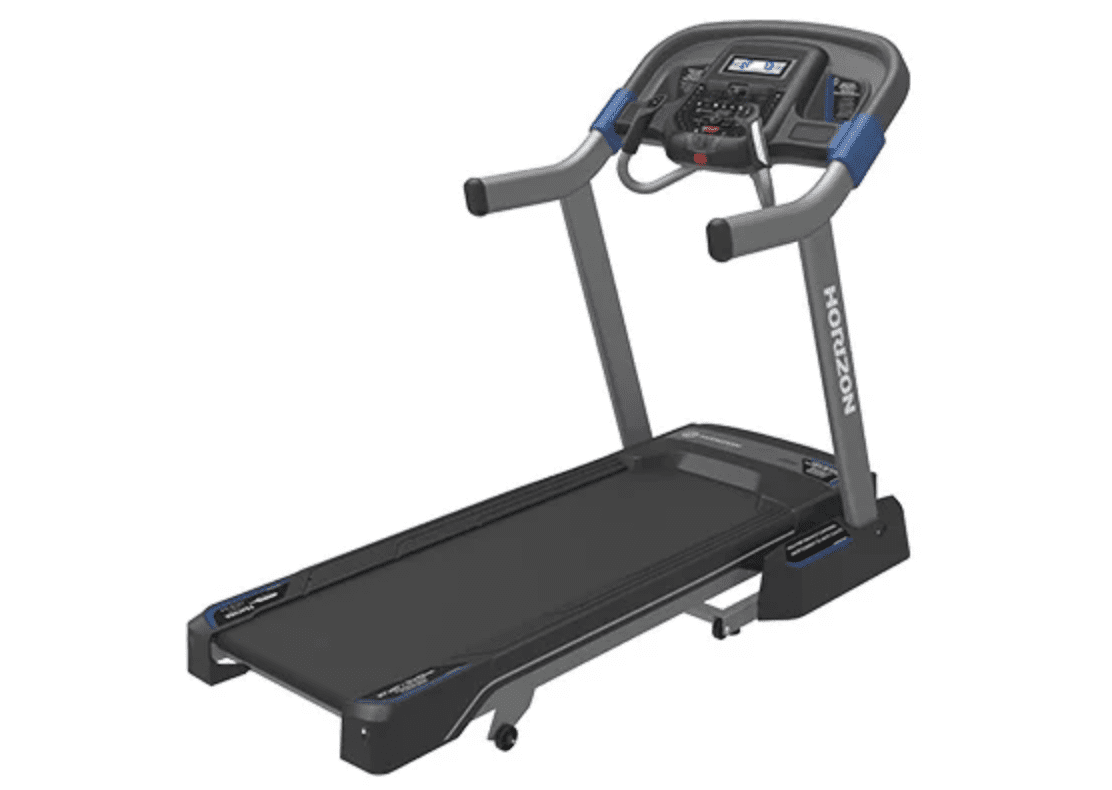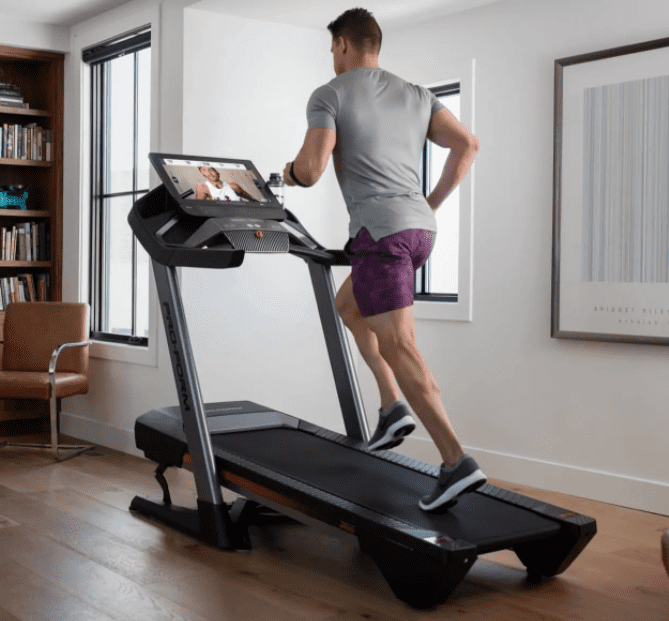Table of Contents
Plus Tips to Pick the Right Type of Shoe
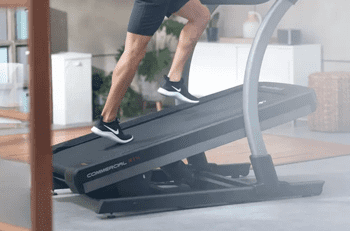
Shoes may seem like a simple thing, but they are still very important. The wrong pair of running sneakers – or ones that are worn out – can cause a wide range of problems and injuries.
Your running shoes do a lot more than cushion your feet from a rough trail or your treadmill’s surface. They provide the entire foundation and support system to keep your body moving in perfect rhythm.
More Than Meets the Eye
Running shoes are designed very specifically to provide a variety of benefits for your body. Companies use a combination of tech and ergonomics to create shoes that are not only good for you, but help prevent injury and additional strain on your body.
To choose the right shoe, there are some very important factors that you should be taking into consideration. For instance, where do you run? Do you have flat feet or high arches? What does your stride look like?
By answering these questions you can ensure you get a shoe that’s right for you. Proper arch support will make your shoes more comfortable and supportive, helping you avoid foot pain. The amount of tread you want will depend on whether you are running on a treadmill, roads or trails. This will also affect the cushioning that you need.
Fitting Tips & Tricks
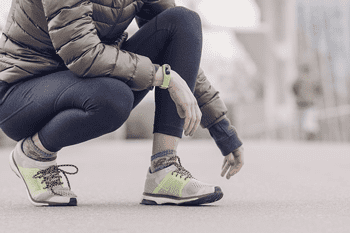
There is no one person in charge of regulating shoe size, they actually vary between brands and even between styles that are the same brand. Just because you wear an 8 in one shoe, doesn’t mean you will wear an 8 in another.
Where To Go – You don’t want to try shoes on just anywhere, make sure you go to a store that focuses on running shoes. When you go to a big box store where you just grab and try things on yourself, you’re missing out on the benefit of expertise. Employees at a running or athletic shoe store can help you find the shoe that matches your exact type of foot and movement.
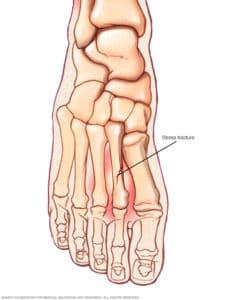
Stress Fracture (Image Credit)
When To Go – As bizarre as it may sound, trying shoes on at the end of the day is the best route. Your feet will be feeling the effects of the day and you’ll get a more accurate feel of how comfortable a shoe is under less than perfect circumstances.
Your feet will be a little swollen after a full day and that’s a good thing in this instance. If a pair of shoes fits just right at the beginning of the day, they may end up being too tight once your feet swell a little. Your feet definitely swell when you run and you need to make sure your shoes can accommodate it.
What To Wear – Wear socks! Specifically, wear the same types of socks you’d wear when you run. Different socks can be thicker or thinner and have cushioning in different places. Wearing your running socks will get you the best fit in your running shoes.
Wiggle Those Toes – Your toes provide balance and stability when you run. This is why you want a shoe that has a wider toe box. This will allow your toes to spread and do the things they are meant to do.
Don’t Get Set In Your Style – Your feet change over time, there’s nothing to be done about it. It is completely normal for foot size, width and arch length to change as you age.
This means that your perfect running shoe will also change over time. Don’t just go buy another pair of the same thing you’ve always worn. Test them out first and make sure they still work for you. This goes for both men and women!
Knowing When to Let Go of Old Shoes
As with all relationships, it’s necessary to know when it’s time to say goodbye.
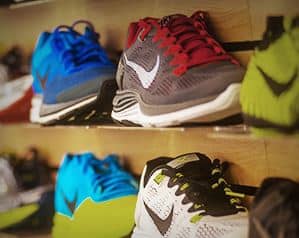
Shoes don’t wear evenly and they won’t just fall apart one day. To know when it’s time for new shoes there are some specific things to look for:
Outer Sole – This is the tough outer layer you see when you look at the bottom of the shoe. If this has worn through, or is worn more on one side than the other, it’s time to let go.
Midsole – As the name suggests, this is the layer between the outer sole and the upper part of the shoe. This is what you stand on. When this wears out you are no longer getting adequate cushioning, support and stability. Look for creasing in the midsole or unevenness where one area is squished down when you look at them from all sides.
Heel Counter – This part of the shoe is a stiff cup-like piece that goes around your heel. It should be stiff to provide support and keep your heel from sliding side to side. If it feels soft or leans when you press it side to side, it’s time to say goodbye.
Shank – This is a part of the shoe you can’t see, but it’s important. This is a stiff piece that runs the length of the shoe under the insole to provide support and structure.
When the shank breaks down it makes the foot bed of your shoe too flexible and they can’t support your arches properly.
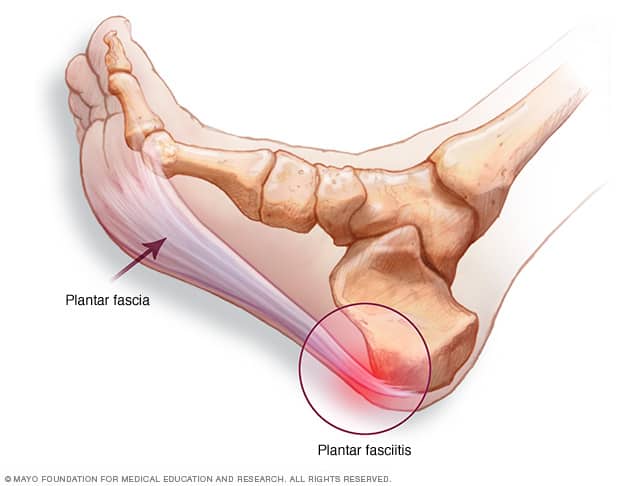
Plantar Fasciitis (Image Credit)
It may sound like overkill, but you do actually want to check your shoes after every run or long walk. Don’t wait until you’re feeling foot or leg pain to notice your shoes have given up on you.
It’s also important to check your shoes before you use them if they’ve been hibernating in the closet for a long time. They can break down just sitting there. Many of the materials used to provide that oh-so-important cushion can dry out and become ineffective over time.
Experts recommend replacing your shoes after 300-500 miles or 45-60 hours of high-intensity exercise. For most this ends up being about once a year. However, these are just guidelines and your checks are the best indicator.
Follow these tips and tricks to keep your feet, body and mind healthy and happy when you’re running.
Sources:
When To Replace Athletic Shoes: Len Canter; 2019
Choose Your Running Shoes Carefully: Robert Preidt; 2019

